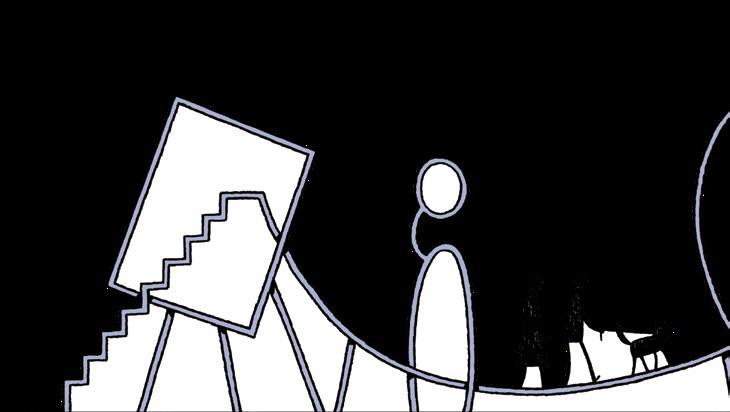
4 minute read
The last thatched cottages
The last straw
Thatched cottages are an endangered species, laments Paul Heiney – who used to grow thatching straw
Advertisement
With great sadness, the imminent death has been announced of the thatched cottage.
Weep now, all you chocolate-box illustrators and prepare to look elsewhere for inspiration. Historic England say the thatched cottage has 20 years left, at the most.
After that, thatchers will no longer be able to obtain the basic raw material of their craft – straw. If your weekend rural drive takes you past endless fields of golden wheat, you might think we grow enough straw to thatch a city twice over. But thatching straw is special straw, a prince among the common throng of feeble, weaker, shorter straws beloved of modern farming, and it is in increasingly short supply.
We have been living under thatched roofs of one form or another for centuries. Until the mid-19th century, it was the most popular roofing in rural areas. Yet now as few as 60,000 thatched properties remain.
Once a symbol of poverty, in the late-20th century thatch became a symbol of wealth. But soon all the money in the world will not buy you a new thatch.
For a decade, I managed my 40-acre farm in Suffolk along traditional lines, aiming to re-create the very best values of Victorian farming methods. Just to make it that bit more difficult, I decided to work the land with horses – Suffolk Punches – rather than tractors.
I also decided that a traditional farming year required a traditional harvest festival which, in turn, required a harvest. True to my ambitions, I shunned all modern advances in agriculture, ignored any wheat seed that might actually return a profit, and instead turned my attention to thatching straw.
From a modern farmer’s point of view, lengthy straw is just so much trash. Mixed farms no longer exist, so they can’t even use the surplus straw to bed down livestock in the winter. Remember the bilious black clouds that used to loom over the countryside at stubble-burning time? That was rightly banned – so yet another disposal method was lost.
The result? The shorter the straw, the happier the farmer and the more desperate the thatcher, and thatchedcottage owners started to think that slates might actually be a good idea.
The horses and I worked hard to grow a rare variety of long-stemmed wheat, but harvest presented a problem. It required a binder, a clattering contraption beyond even the wild imagination of Heath Robinson and blessed with a mind of its own. Its job is to cut the corn and tie it into bundles – after which we would all roll home singing, ‘Bringing in the sheaves, we shall come rejoicing bringing in the sheaves.’ I soon learned that rejoicing would be in short supply. For a start, brand-new binders have not been on sale for well over 50 years. So I resorted to a museum piece with more rust than metal, bought from an old farmer who had last used it the year of the Coronation. He didn’t say which monarch.
A binder offers huge scope for disaster. Three horses are required to pull with all their might to activate a horizontal knife which cuts the standing corn just above the ground. The corn then falls onto a travelling canvas, first horizontally and then vertically, to arrive at the buncher, which gathers it into a sheaf – yet another of the chocolate-box artist’s armoury of rural icons.
Now comes the most unfathomable bit of the whole process. When the bundle is of sufficient size, an arm springs up to pass a string round it. Then – and this is the amazing bit – a device springs into action that actually ties a knot to hold it together.
But sadly not always. There is no despair to compare to that felt when the knotter fails and the corn falls back to the field, to be picked up later, by hand, under the blazing heat of the summer sun. The string might run out, the weeds jam the cutting knife, or the horses sense the growing hopelessness of the situation and do what all horses do when their master is losing his mind – ignore his rambling commands.
The knotter can be described only as a work of genius. To watch it is to marvel at it, but little understanding is ever gained. If mine had gone wrong, I could never have fixed it. I’ve read that the inventor of the knotter was a Canadian who found that his creation grew beyond even his own understanding and, in great distress, he resorted to killing himself.
But I was only ever an amateur straw-grower. I take my hat off to those who face this epic annual struggle before being able to declare that all is safely gathered in.
Sleep easy all you who are still lucky enough to snuggle down every night in your thatched cottage. And console yourself with the thought that the farmer who grew your straw will be sleeping deeply, too – mostly from exhaustion.
In 20 years, the basic material of the thatcher’s craft will be unobtainable Paul Heiney’s latest book is Farewell Mister Puffin (Bloomsbury)









